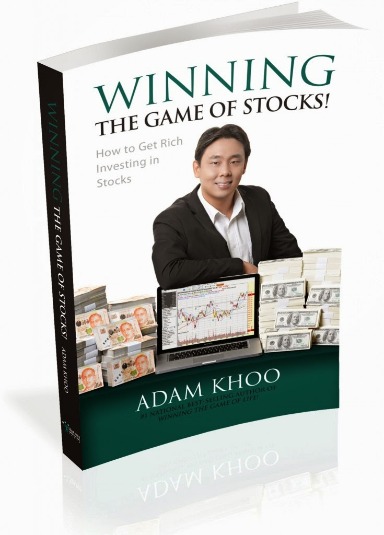Contents

In other words, it is the amount of money left after paying off all the direct taxes. In the initial stages, most market changes are psychological and may not necessarily be accompanied by robust economic information or Corporate earnings. Market trends are subject to numerous variables, which makes them difficult to predict. Traders use these patterns to make predictions and profit, regardless of which way the market is going. Her 15-year business and finance journalism stint has led her to report, write, edit and lead teams covering public investing, private investing and personal investing both in India and overseas.

Simply put, it involves borrowing coins when the price is high and selling them. When the market falls, the same amount of coins is repurchased at a lower price and returned to the original owner, leaving the bear with the difference they’ve made in fiat money. A market that experiences steady growth is known as a bull market. On the other hand, a market that continuously falls is known as a bear market. These are the most basic price movement patterns which can be encountered on any financial market, not just crypto.
A bear market can vary in length but can last from a couple of weeks to an average of two years. It takes much longer to recover from a bear market than it does for a bull market to reverse direction, because investors and traders need more time before taking high risk trades again. In a perfect world, you could predict when the market would turn so that you could capture all the gains of bull markets and suffer none of the losses of bear markets. In the real world, the best bet is usually to hold on through ups and downs. During a bull market, people may generally feel positive about the future as their investments perform well in the market.
So, this is the fruit which you got for taking the opportunity if you had bought in 2017. How to Invest $1,000 Four figures can produce some great returns if invested in the right places. Catch up on Select’s in-depth coverage ofpersonal finance,tech and tools,wellnessand more, and follow us onFacebook,InstagramandTwitterto stay up to date.
Bear versus bull market: Here’s the difference and what investors need to know
A prominent example of a Bear Market is the recession, followed by the Wall Street stock market crash of 1929. The investors were struggling to exit the market with sustainable losses getting incurred. To prevent excessive losses, investors continued selling their stocks, causing a further decline. The market collapsed on October 29, 1929, followed by a sustained depression in the economy called the ‘Great Depression.’ The Dow Jones Industrial Average declined by almost 90% through 1932.

Instead of referencing an animal, the term “bull” may have originated at the London Stock Exchange. A related theory is that the term “bear” originated with the market for bearskins. Middlemen in the trade would sell skins before they’d bought them from trappers. But one theory is that they come from a rather grisly bloodsport – popular in both Elizabethan England and gold rush era California – in which a bull would be pitted against a bear. In this case, bulls represent a rising market, because when bulls attack, they thrust their horns upwards, whereas when bears attack, they claw downwards. As we have already established, a bull and a bear market are polar opposites.
Rising interest rates are a definite negative for stocks because they both raise borrowing costs for corporations, and increase yields on safer investments, like U.S. In and of itself, inflation won’t necessarily lead to a bear market. If the economy continues to grow and interest rates remain low – as in, lower than the rate of inflation – we could experience a bull market. That’s because inflation causes corporate revenues to rise along with prices.
Content: Bull Market Vs Bear Market
Both animals are known for their incredible and unpredictable strength, so the image that each evokes in regards to stock market volatility certainly rings true. However, even during bull markets it’s important to remain diversified and to dollar-cost average into any positions. That’s because there’s no way to know when a bull market will turn into a bear market.
It’s easier to feel confident about your investments during a bull market, but remember that staying the course is usually the best thing you can do with your money when a bear market occurs. During a bear market, market sentiment is negative; investors begin to move their money out of equities and into fixed-income securities as they wait for a positive move in the stock market. In sum, the decline in stock market prices shakes investor confidence.
Expansionary PoliciesExpansionary policy is an economic policy in which the government increases the money supply in the economy using budgetary tools. It is done by increasing the government spending, cutting the tax rate to increase disposable income etc. In the market with prices and trading volumes continuing to rise. Stock P/E RatiosThe price to earnings ratio measures the relative value of the corporate stocks, i.e., whether it is undervalued or overvalued.
Bull investor
The bear market often goes hand in hand with a sluggish economy, high unemployment rates and unwelcome changes in taxation. Crypto-specific problems include the state of regulation and taxation, and initial coin offerings scams. A bear market occurs when prices are falling, or when they’re expected to decrease. Like bull market, the term usually refers to the stock market, but it can also be used in the context of real estate, currencies, and other commodities. There’s no formal metric to measure when a bear market is happening, but a 20% decline in prices is sometimes used as the threshold. In the case of equity markets, a bull market denotes a rise in the prices of companies’ shares.
- It serves as an indicator of the overall financial market condition by listing the historical and real-time trends in different market segments.
- During a bull market, people may generally feel positive about the future as their investments perform well in the market.
- Bear markets tend to bring out pessimism, but some people may see an opportunity to start investing during a recession.
- Tends to be higher during a bull market as companies hire more, but lower in a bear market as companies let go of workers to cut costs.
- Value investors look for stocks that are undervalued by the market and are typically willing to hold on to them for a long period of time, even when the market is in a downturn.
The S&P 500 more than doubled as deregulation led to mergers, acquisitions, and flurries of market activity powering corporate profits. From 2007 to 2009, the S&P 500 fell about 50%, so we call it a bear market. There’s a lot of debate here, and plenty of perspectives on how positive and negative market movements earned such visual mascots. The most commonly accepted reasons are simply nature and human history. The period from December 2020 to November 2021 is a great representation of a bull crypto market.
Securities and Exchange Commission is a period when stock prices decline and the markets have a pessimistic sentiment. Technically, such a period is defined as a bear market when a broad market index declines 20% or more over at least two months. Most of the time, investors lose their confidence and exit in the bear market itself by booking losses. But there is a caveat involved; selecting a stock based only on its price during a bear phase, without checking the fundamentals of the company, can be misleading. Understanding that a bull market signals rising stock prices and a strong economy, while a bear market signals falling stock prices and possibly a weak economy is crucial to any type of investor.
Earlier in his career, he spent nearly a decade covering corporate news and markets for Dow Jones Newswires, with his articles frequently appearing in The Wall Street Journal and Barron’s. The material provided on this website is for information purposes only and should not be understood as an investment advice. Any opinion that may be provided on this page does not constitute a recommendation by Capital Com or its agents.
Biggest electric vehicle companies: Can Tesla keep EV top dog crown?
If stock markets are not performing well and there are few good buying opportunities, it may be reasonable to diversify your portfolio into alternative investments. While there is no guaranteed way to avoid losses during a bear market, alternative investments can help to mitigate them. During a bear market, prices are falling and investors are pessimistic about the future. Bear markets can last for months or even years, resulting in a negative impact on investors and the economy. Whether it’s better to buy stocks in a bull vs. bear market isn’t a simple question; every market is unique, as are each individual’s circumstances. Investing in any kind of market comes with risk, including the risk that you could lose money, so it’s important to understand best practices for investing in both bull and bear market phases.
Consumer https://topforexnews.org/All aspects of the economy are doing well during this phase, even consumers spend more. The spending power of an individual rises with the expectation that the economy will continue to grow and do well.Consumption reduces as spending power reduces. An individual intends to save more as the objective is capital preservation, until revival of economic growth. EmploymentThe economy is thriving, industry is booming, and production is flourishing.
Not surphttps://forex-trend.net/ly, investing in a bull market is generally easier than navigating a bear market. That’s because it’s mostly a matter of investing your money, and letting the market grow your portfolio. Both significant increases of inflation and interest rates typically lead to recessions.
Whether we’re in a https://en.forexbrokerslist.site/ market or a bear market, one thing holds true for every person. You could benefit from sticking to your investment plan and incorporating market contingencies into your plan. This can only be viewed in a historical context, as you would need to find the low points and high points in an index’s historical charts. What may seem like the end of a bull or bear market may only be a correction until a 20% price change threshold is reached. There are short periods at the beginning and end of each cycle where investors feel uncertain whether the market has shifted direction. In these times, the sentiments may be mixed until the economic conditions are more revealed through persistent trends.
